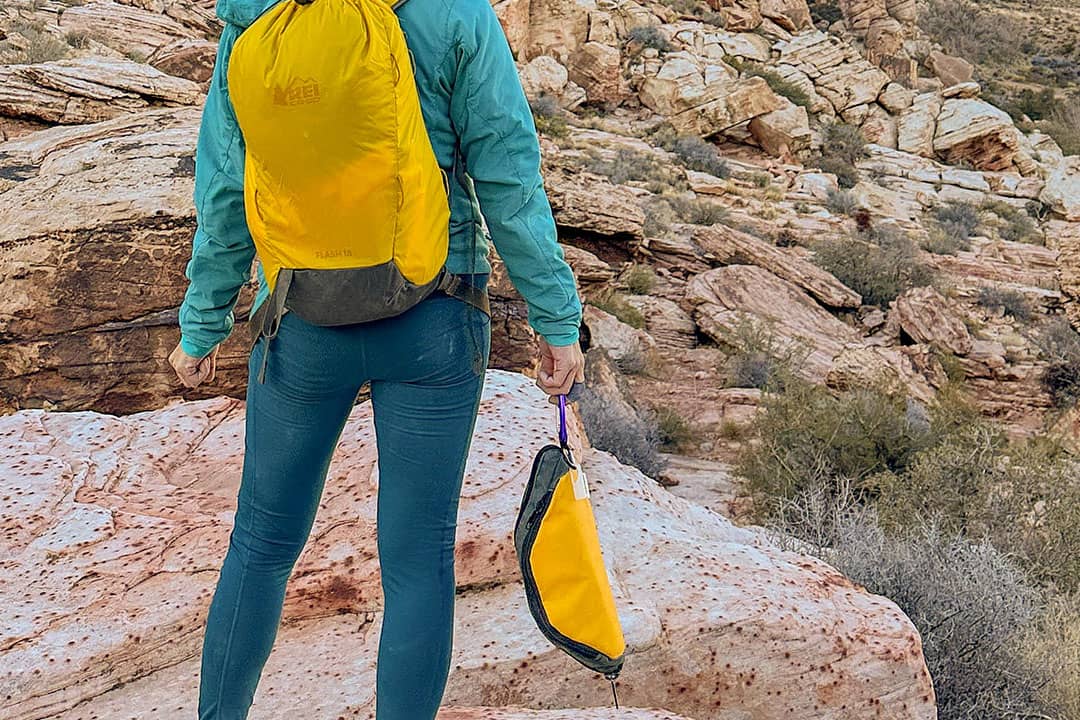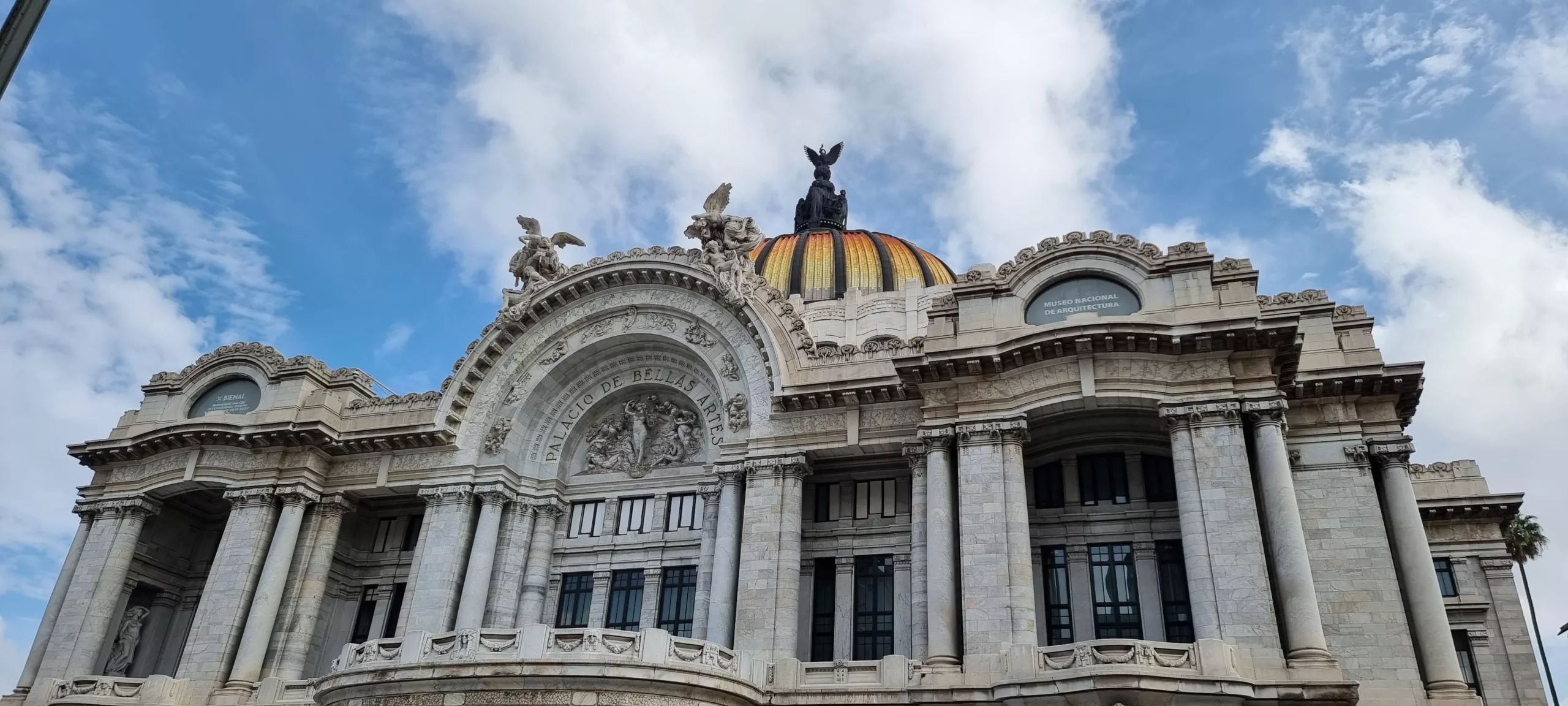
The morning light fell gently on the ancient stones as if whispering to the ghosts of empires past. This Mexico City travel guide is your companion for a day of unforgettable stories—told through sacred Aztec ruins, colonial facades, sizzling street tacos, and rooftop sunsets.
A Mexico City Travel Guide Through History, Flavor, and Culture
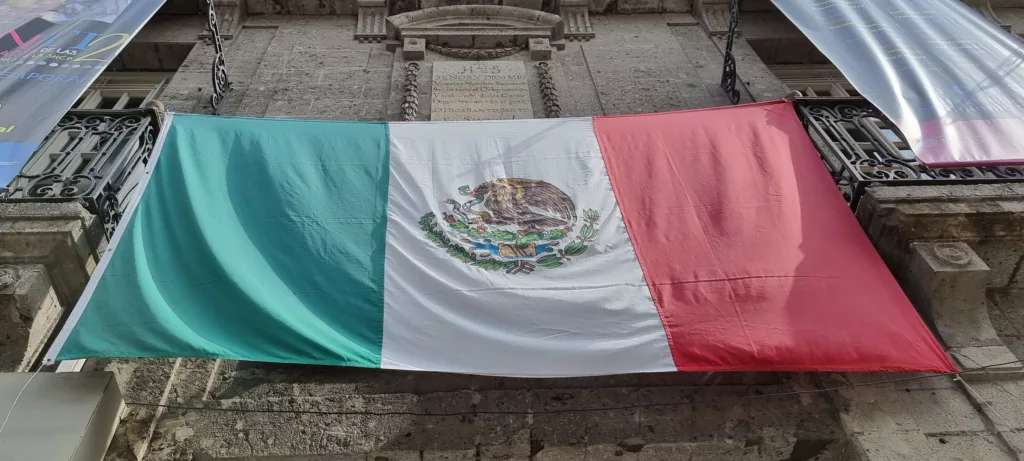
 Mexican flags flutter over the heart of the Zócalo, where centuries of history still echo.
Mexican flags flutter over the heart of the Zócalo, where centuries of history still echo.
In just 24 hours, you’ll walk through the heart of Mexico City—also known locally as CDMX (short for Ciudad de México)—tasting its culture, hearing its pulse, and seeing its soul. From grand cathedrals to street-side flavors, this one-day itinerary blends history, art, food, and feeling into an experience that lingers long after you’ve left.
Morning in the Historic Center
Sunrise washes the Zócalo in gold, the calm before the cultural storm.
Begin your day in the Zócalo, one of the world’s largest and most iconic city squares. As the sun rises, it casts long golden shadows over the Catedral Metropolitana, whose towering presence blends Spanish colonial architecture with indigenous motifs.
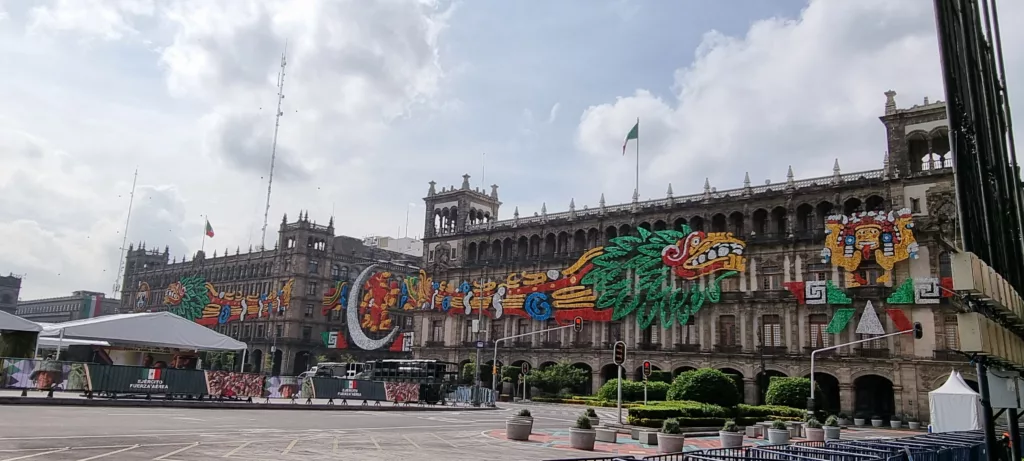
 The Catedral Metropolitana stands tall—blending colonial grandeur with indigenous spirit.
The Catedral Metropolitana stands tall—blending colonial grandeur with indigenous spirit.
Mexico City’s Historic Center is not just a place of vibrant life and colonial beauty—it’s also a designated UNESCO World Heritage Site. This recognition celebrates the area’s extraordinary cultural significance, where Aztec temples and colonial palaces stand side by side, offering a living chronicle of the city’s layered past.
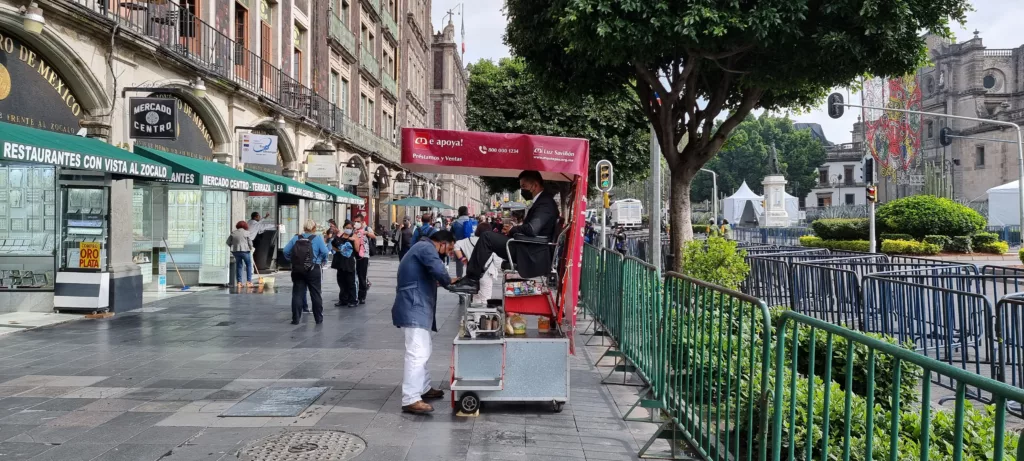

Vendors set up their wares, offering flowers, maps, and breakfast tamales. The scent of fresh tortillas drifts through the square. There’s a hushed energy in the early morning, where modern city life meets ancient echoes.
A short walk brings you to the Palacio Nacional, home to Diego Rivera’s murals that tell the sweeping, sometimes painful, history of Mexico. If you can, peek inside to witness his work—a history book told in color and form.
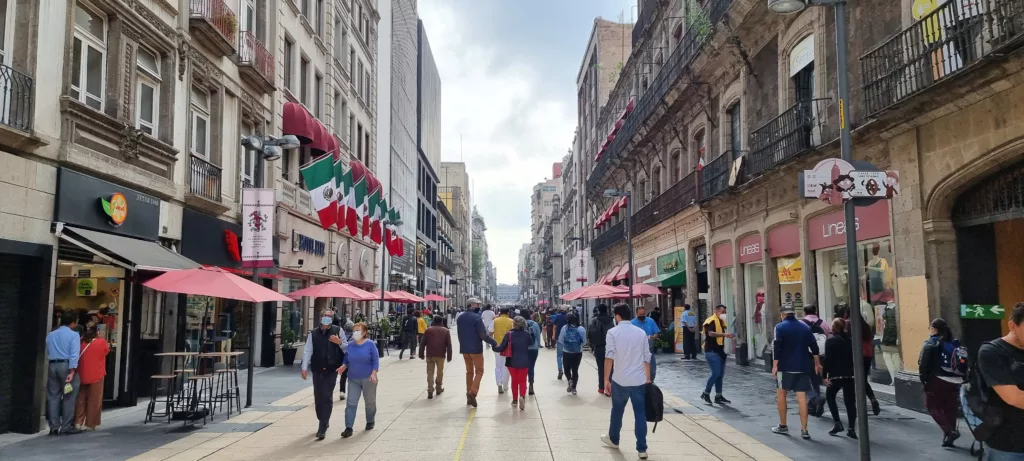
 Calle Madero bursts to life with color, footsteps, and the pulse of Mexico City’s historic core.
Calle Madero bursts to life with color, footsteps, and the pulse of Mexico City’s historic core.
From the Zócalo, I strolled west along Calle Madero, a bustling pedestrian street that pulses with life. Colonial façades, rows of flags, cafés with red umbrellas, and a symphony of footsteps define this iconic street. It’s one of the best places to shop, snack, and soak up the atmosphere of Centro Histórico. With each step, I passed through layers of history—modern boutiques nestled in centuries-old buildings, and mariachi music floating between storefronts.

 Once home to Mexico’s emperor, the Palacio de Iturbide is a quiet masterpiece on Calle Madero.
Once home to Mexico’s emperor, the Palacio de Iturbide is a quiet masterpiece on Calle Madero.
As I wandered down Calle Madero, I stopped to admire the Palacio de Iturbide, a baroque mansion adorned with wrought iron balconies and carved stonework. Once home to Mexico’s emperor, today it offers a quiet cultural contrast to the buzz of shoppers and performers outside. It’s living proof of how Mexico City preserves its layers—colonial, imperial, and contemporary—all within a single block.
A Walk Through Time at Templo Mayor
The echoes of the Aztecs still whisper here.
Next, step back in time with a visit to Templo Mayor, the ruins of the great Aztec temple of Tenochtitlán. These stones once formed the heart of a thriving civilization, and even in ruin, their presence is powerful.
The museum on site offers invaluable context—ritual artifacts, ceremonial knives, and sacred sculptures. As you walk through the remains, it’s easy to imagine the drums, the chants, and the flames of a city that defied the centuries.
If you want to truly understand the layers of history beneath your feet, consider joining a Templo Mayor guided tour. It’s an enriching experience led by experts who breathe life into the stones with fascinating stories and cultural context. You’ll walk through excavated ruins, see sacred offerings, and visit the adjoining museum filled with pre-Hispanic artifacts.
Travel tip: Arrive early to avoid crowds and heat. Entry is affordable and well worth it.
If you’re fascinated by ancient civilizations, you might also enjoy this story from another side of Mexico: a day trip to Chichen Itza from Playa del Carmen. It’s another encounter with Mexico’s rich past—this time, from the perspective of the Mayan world.
Street Food in CDMX: Tacos and Tales
Tacos al pastor, freshly chopped and flame-kissed.
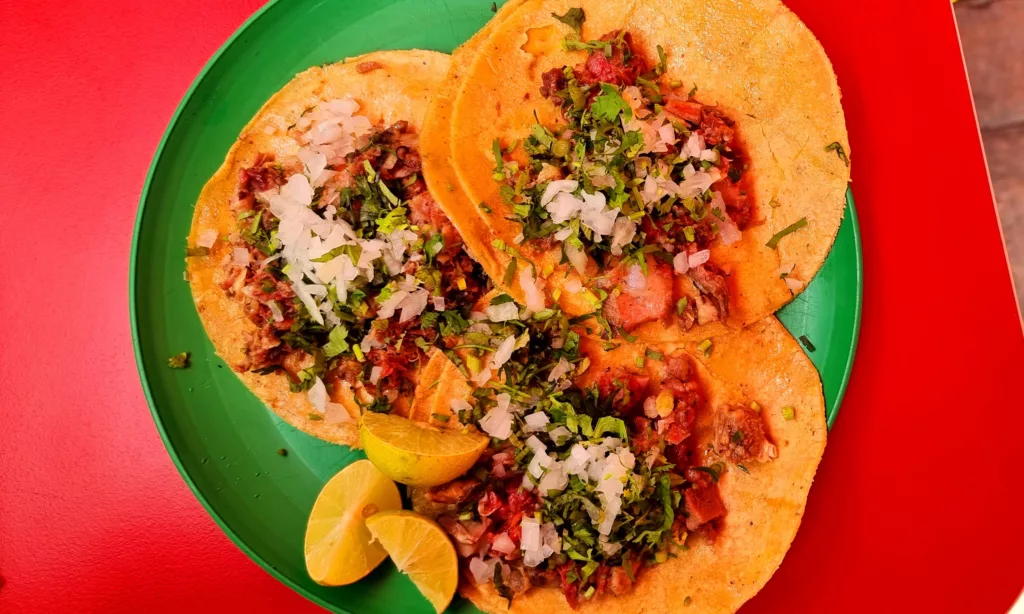
 Tacos al pastor sizzling on the spit—flavor and tradition in every bite.
Tacos al pastor sizzling on the spit—flavor and tradition in every bite.
No Mexico City travel guide would be complete without mentioning its legendary street food. Just a few steps from the ruins, I found a humble cart serving tacos al pastor: marinated pork shaved from a spit, crowned with pineapple and salsa.
The meat sizzled, the air smelled of citrus and spice, and every bite felt like a conversation with the city.
Want to go deeper into flavor?
Book a guided street food tour in Mexico City
Other must-tries:
Agua frescas: fresh, fruit-based drinks
Tlacoyos: thick blue corn tortillas filled with beans
Churros: crispy, sugary, perfect with hot chocolate
Palacio de Bellas Artes and Alameda Central
The palace stands like a jeweled crown in the heart of CDMX.
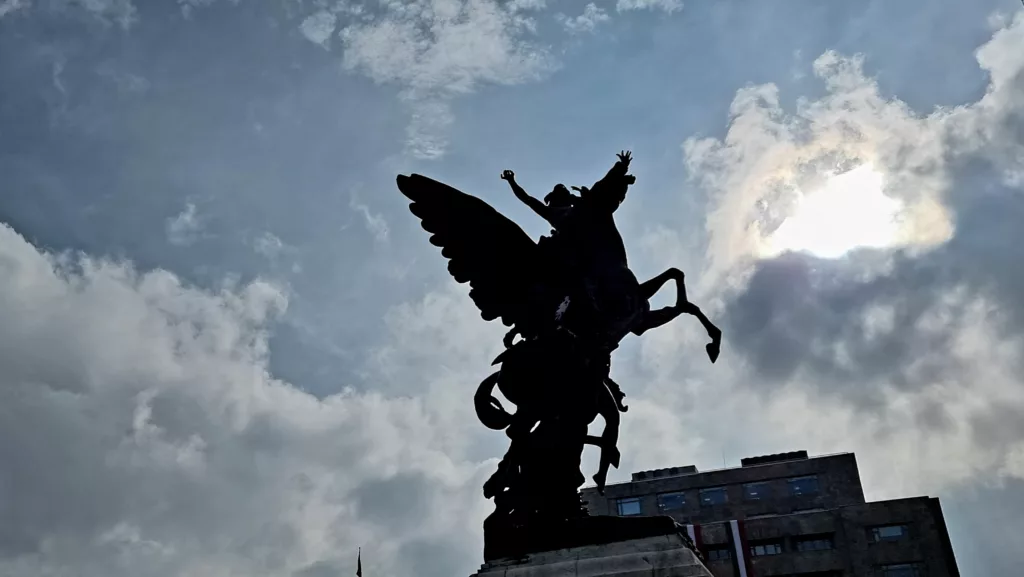

From food to fine art, continue your journey at the Palacio de Bellas Artes. This architectural marvel houses murals by Rivera, Siqueiros, and others—an art-lover’s dream.
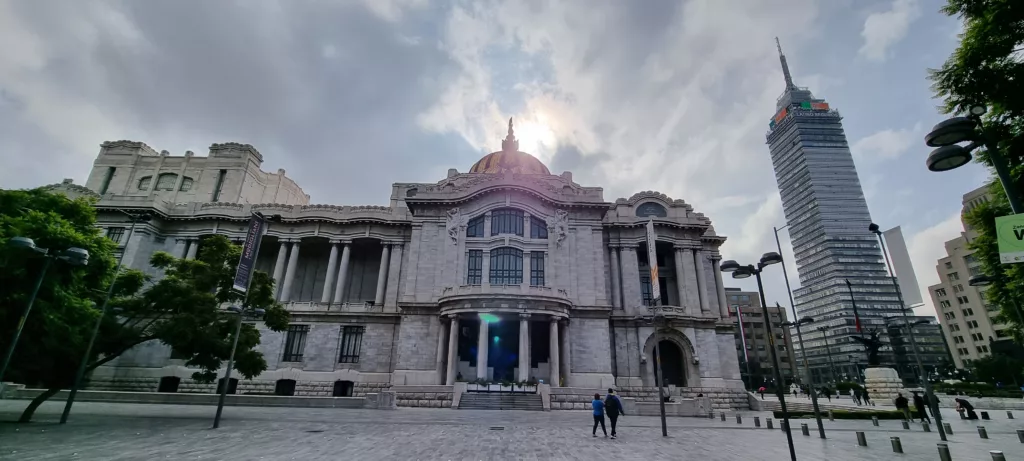

The orange and gold domes gleam in the sun, while inside, the building hums with cultural depth. Check for rotating exhibitions or just wander the grand halls.
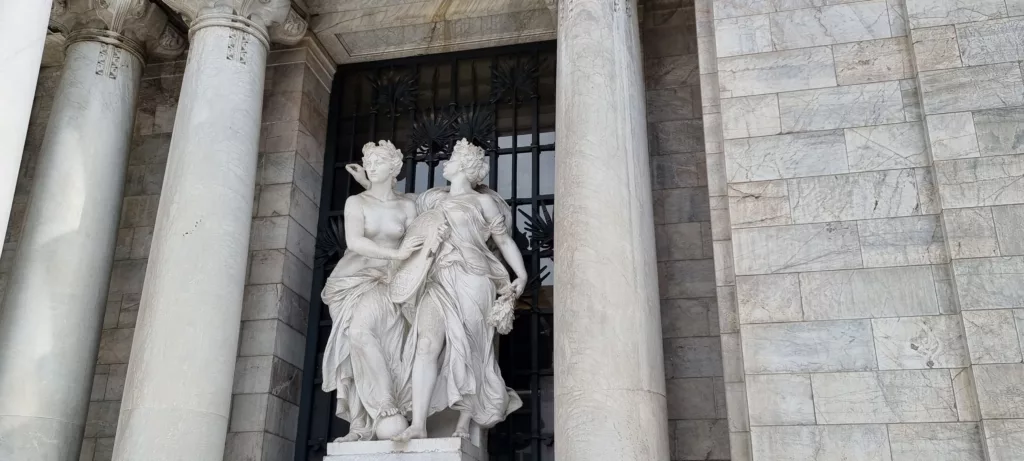
 Marble muses guard the palace entrance—frozen in movement, carved in elegance.
Marble muses guard the palace entrance—frozen in movement, carved in elegance.
Just outside the palace, you’ll find majestic sculptures of muses and classical figures, carved in pristine white marble. One of the most striking pairs stands beneath the grand pillars—two women draped in flowing robes, one holding a tambourine and the other a garland. They seem to welcome visitors into a realm where music, dance, and myth converge. It’s easy to get lost in the details—the gentle folds of their robes, the poised elegance of their stances—an open invitation to pause, look closer, and listen to the silence of stone.
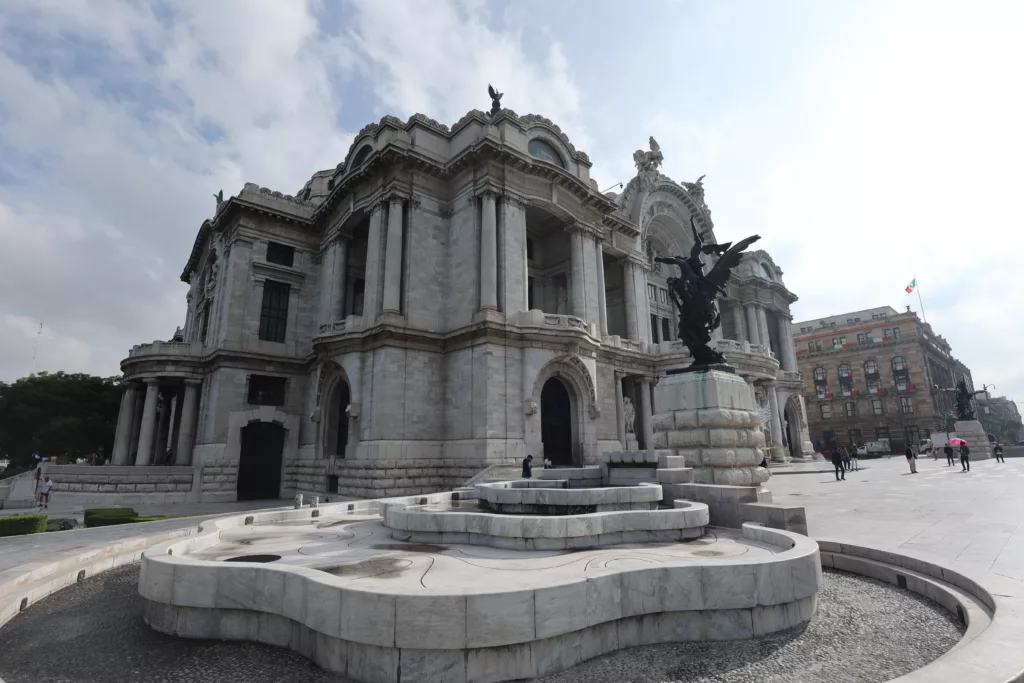
 Palacio de Bellas Artes rises in full neoclassical grandeur—where marble meets movement and Mexico’s artistic soul begins.
Palacio de Bellas Artes rises in full neoclassical grandeur—where marble meets movement and Mexico’s artistic soul begins.
As I circled the palace from the outside, I was struck by its sheer marble magnificence. Its neoclassical pillars and detailed iron sculptures gave it the look of a cultural fortress—silent but powerful. The plaza surrounding it felt like a gathering place for both travelers and locals, pausing in awe of this architectural jewel. The curved fountain and winged statues framed the building like guardians of its artistic legacy.
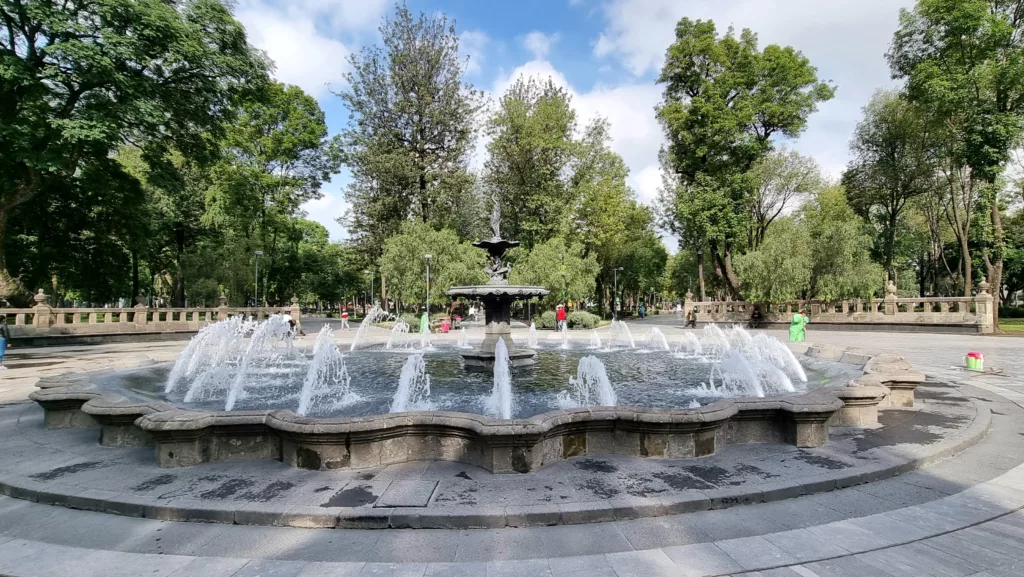
 A peaceful pause at Alameda Central—a garden of fountains, lovers, and locals.
A peaceful pause at Alameda Central—a garden of fountains, lovers, and locals.
Just outside is Alameda Central, a lush park where you can catch your breath, watch lovers strolling, or simply sit beneath the trees and people-watch.
Rooftop Pause: Coffee with a View
The pace of the day invites a pause. I climbed to a rooftop café near Torre Latinoamericana, where the city unfolded beneath me like a map drawn in color and movement.
The coffee was rich and smoky, the breeze soft, and the moment—unhurried.
Find rooftop cafés and boutique hotels in Mexico City (insert Booking.com or Agoda affiliate link)
If you want a quiet place to journal, read, or reflect, CDMX’s rooftops offer a surprising sense of stillness.
El Ángel: The Monument to Mexico’s Independence
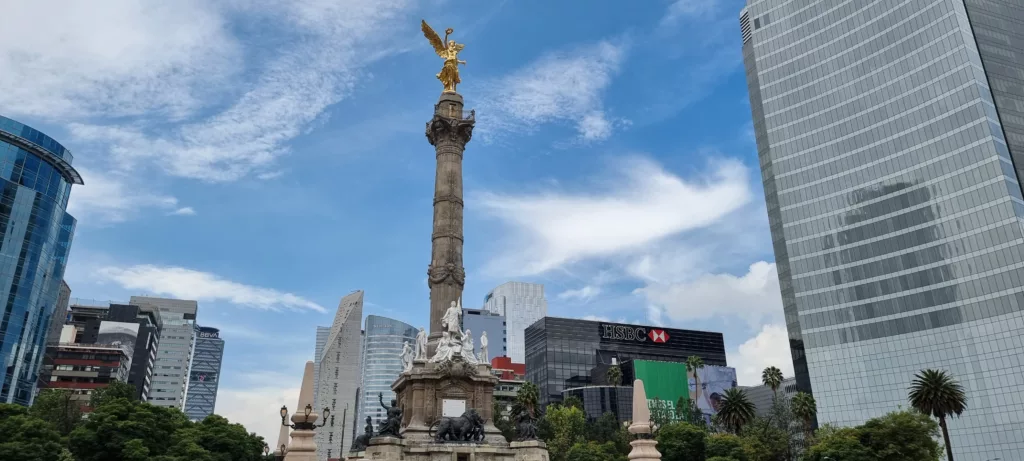
 The golden-winged El Ángel rises as a symbol of Mexican independence and national pride.
The golden-winged El Ángel rises as a symbol of Mexican independence and national pride.
Standing proudly along the iconic Paseo de la Reforma, the Monumento a la Independencia—fondly known as El Ángel—is a golden-winged statue that has become a symbol of freedom and national pride in Mexico. It commemorates Mexico’s War of Independence and is one of the most recognized landmarks in the country.
The statue sits atop a grand column and is surrounded by statues of key figures in Mexican history. Locals and tourists alike gather here—not only for photos but also for celebration, reflection, and remembrance. If time permits, this landmark is a worthwhile stop to admire, especially during golden hour when the statue glows.
Torre Latinoamericana: A City in Sunset
The city unfolds like a painting from above.
No better way to end your one-day itinerary than from the Torre Latinoamericana, one of Mexico City’s tallest buildings.
From the top, the sprawl of the city becomes a soft ocean of rooftops. As the sun dips behind the volcanoes, the city changes hue—from orange to gold to indigo.
People around me whispered, took selfies, kissed. But I just stood quietly, letting the colors settle into memory.
Tip: The observation deck costs a small fee but gives a huge return in wonder.
Mexico City Travel Guide: Practical Tips
Where to Stay:
How to Get Around:
- Metro is cheap and vast, though busy.
- Uber is reliable and safe.
- Most places in the center are walkable.
Safety Tips:
- Stick to well-lit areas at night.
- Use small bills when paying street vendors.
- Keep your valuables in a front pouch or crossbody bag.
Best Time to Visit:
- November to April: Cool and dry.
- Avoid June to August for heavy afternoon rain.
This Mexico City travel guide captures just a glimpse of what CDMX has to offer—layers of history, flavor, art, and soul.
Final Reflection
To walk through this city is to touch centuries in a single step. You hear it in the marimba, smell it in the tamales, feel it in the murals. And though a day is short, the memory lingers like the sweetness of chili on your lips.
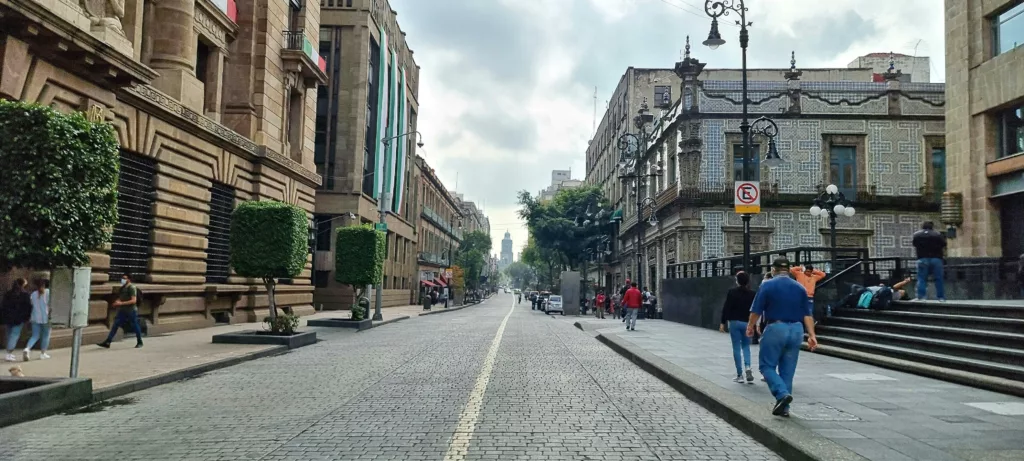

So take that walk. Let the city tell its stories. And maybe, just maybe, leave a little piece of your heart behind in its warm, beating rhythm.
Please visit:
Our Sponsor
